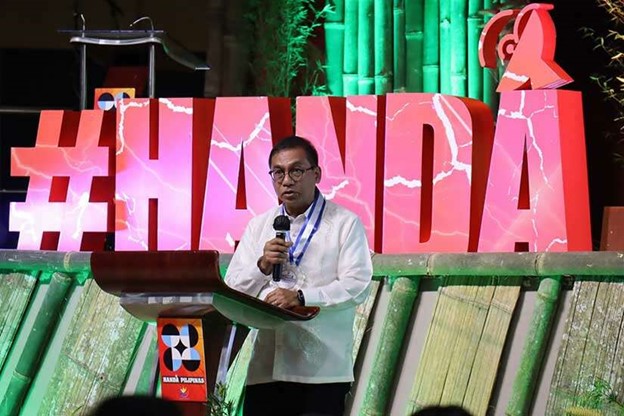“Does survival imply resilience?” This was posted by Department of Science and Technology (DOST) secretary Renato U. Solidum Jr. during the opening ceremony of the 2024 Handa Pilipinas: Innovations in Disaster Resilience Luzon Leg held on 3 July 2024 at the Plaza Del Norte Hotel and Convention Center, Laoag City, Ilocos Norte.
Solidum emphasizes that Filipinos have always been portrayed as resilient during disasters as characterized by having pleasant disposition in the face of hazards but does that really mean resiliency?
The Philippines is prone to various hazards as Region I alone, is prone to the passage of tropical cyclones and floods. Solidum explained that the region is also exposed to strong earthquakes. He cited that the hills near the shoreline on the Municipality of Currimao show ladderlike hill embankments suggesting that major earthquakes had occurred some three to four times in the past years.
“We want to express our aspiration to become a community, a region, a country that is ready and prepared against hazards,” declared Solidum. He added that through this exposition, the public awareness towards knowledge in natural hazards and the latest technologies is heightened.
Solidum also shared that the key to building climate and disaster resilience is to redefine the Filipino context of resilience.
In most cases, he said, Filipinos are portrayed smiling after any disaster. “Mahilig magpapicture ang mga Filipino kahit mayroong baha pero nakangiti pa rin.” He said that this is associated with accepting the worst conditions. However, these norms are a deterrent to achieving resiliency as this leads to lowering the standards for the quality of life that we are supposed to have.
Additionally, he said that the frequent exposure to hazards in the Philippines suggests that we should transform the Filipino mindset and culture of resilience. Resilience should allow the Filipinos to adopt, resist, transform, and recover from the effects of the hazard in a timely and efficient manner.
“Resilience is moving beyond merely surviving the impacts of disasters,” stressed Solidum. “But instead making resilience a way of life, embedded in our households, schools, communities, businesses, economy, and governance.”
He also shared the three important goals that should guide the government in achieving resiliency which are to reduce the various risks prior to hazard occurrence which is to strengthen the houses that we build, locate to a safer area, and make sure that structures are usable before and after the hazards.
He stressed the need to ensure evidence-based local land-use plans, local development plans, investing in infrastructure resilience and ensuring resilient businesses and economy.
Efficient response to hazards is equally important. He explained that we need to prepare so we can respond faster and effectively. He emphasized the need for preparedness to respond to lessen the loss of life by making sure that the recovery and medical aspects during emergency responses are efficiently carried out.
Lastly, we need to improve managing complex worst-case scenarios while ensuring interoperability among key stakeholders. “Our earthquake drills are done without the assumption that a typhoon or rain will occur during the earthquake event or before or after,” Solidum pointed out. He added that this scenario had happened during the Mt. Pinatubo eruption in 1991. He said that all these compounding hazards must be part of the simulation scenario to prepare for big events.
“Handa na po ang Pilipinas sa maliliit na trahedya. Local government kayang-kaya,” he said. “But we are not prepared for large-scale events. We are there preparing but we still need to do more, that is why we have (Handa Pilipinas) campaign.
Handa Pilipinas: Innovations in Disaster Resilience is a disaster risk reduction and resiliency campaign initiative to help spread public awareness and knowledge towards disaster preparedness to help the local government get access to the latest technologies developed by DOST and its partner organizations. Aside from various forums on disaster mitigation, the expo also presents several locally developed and market-ready technologies for disaster preparedness, response, and recovery. (PR)

